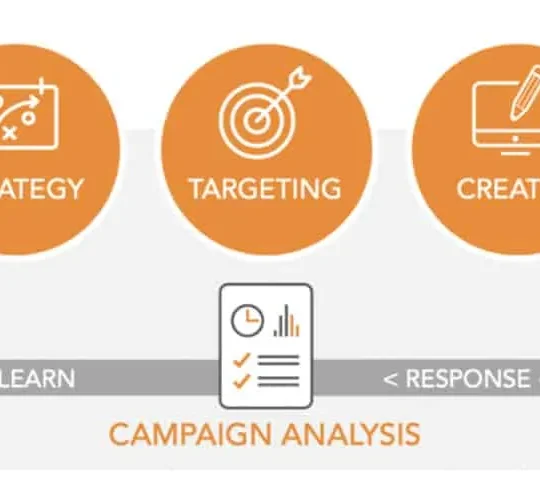 As of 2020, over 82 percent of organizations globally say that improving cybersecurity is a priority. It’s easy to see why cybersecurity is such a huge concern. The average cost of a data breach was a staggering $3.92 million in 2019.
As of 2020, over 82 percent of organizations globally say that improving cybersecurity is a priority. It’s easy to see why cybersecurity is such a huge concern. The average cost of a data breach was a staggering $3.92 million in 2019.
Cyberattacks and data breaches are prevalent in today’s hyper-connected society. Businesses that don’t invest in robust vulnerability management expose themselves to threats.
But what exactly is vulnerability management and scanning? How does implementing it protect you from cyberattacks? More importantly, how do you go about it?
These are just some of the issues that we tackle in this comprehensive guide. Read on to learn more.
Table of Contents
What Is Vulnerability Management and Scanning?
Vulnerability management involve identifying and reporting on security vulnerabilities. A vulnerability scanner typically probe and gather information about your systems. By so doing, the scanner identifies any security holes that hackers can use to gain unauthorized access to your systems.
With the information gained from vulnerability scanning, an organization can take appropriate action. They can gauge the severity of each security weakness and know how best to respond.
What Are Security Vulnerabilities?
These are technological weaknesses that allow cybercriminals to attack and compromise a system. To discover these vulnerabilities, it’s essential to conduct vulnerability scanning regularly.
How to Do Vulnerability Scanning
The scanning process can be broken down into four steps. Below, we discuss each of these steps:
1. Identifying Vulnerabilities
Central to any vulnerability management solution is a reliable vulnerability scanner. The vulnerability scanner can identify different systems running on a network. Such systems include desktops and laptops, physical and virtual servers, firewalls, and databases.
Once it has identified a system, the scanner probes it for a variety of attributes. These attributes include open ports, user accounts, the operating system, and installed software. The vulnerability scanner then associates this information to any known vulnerabilities.
That association is done using a vulnerability database of publicly known vulnerabilities.
It’s essential that you configure vulnerability scanners. Sometimes, vulnerability scanners can disrupt the systems and networks that they scan. Consider scheduling vulnerability scans during the off-peak hours when bandwidth isn’t limited.
2. Evaluating Vulnerabilities
Once the scanners have identified vulnerabilities, you need to evaluate them. This way, you can deal with any risks they pose.
Most vulnerability solutions provide risk scores and ratings for vulnerabilities. The scores help you determine which vulnerabilities to deal with first. It is important to note, however, that these ratings aren’t the only indicators of the true risk posed by a vulnerability.
Other helpful factors to look at while evaluating vulnerabilities include:
- Whether the vulnerability is a true or false positive
- Whether the vulnerability can be directly exploited by someone from the internet
- How difficult it is to exploit the vulnerability
- What impact the exploitation of the vulnerability might have on your business
- How long the vulnerability has been on your network
- Whether you already have security controls to reduce the impact of the vulnerability being exploited
3. Treating Vulnerabilities
After vulnerabilities have been identified and validated, the next step is to prioritize how to treat them. This step is done in collaboration with the original stakeholders or business network.
Vulnerabilities can be treated in various ways, including:
Remediation
This entails fixing or patching a vulnerability to prevent someone on the internet from exploiting it. It’s the best approach to dealing with vulnerability.
Mitigation
Mitigation entails reducing the likelihood or impact of the exploitation of a vulnerability. You can adopt this approach if a proper patch or fix for the vulnerability hasn’t been identified yet. Mitigation buys you time as you look for a remediation for the problem.
Acceptance
Acceptance entails taking no action to patch, fix, or lessen the likelihood of a vulnerability being exploited. You can adopt this approach if the vulnerability is low risk. You can also do so if the cost of fixing or patching it is significantly higher than the impact of the vulnerability being exploited.
4. Reporting Vulnerabilities
Every organization needs to perform regular vulnerability assessments. This allow them to understand how fast and efficient their scanning program is.
Typically, a scanner will have various options for visualizing data. This way, your IT team can easily determine which remediation technique can help them fix a vulnerability using the least effort.
What Are the Benefits of Vulnerability Management?
Implementing a vulnerability management system can help your organization in many ways. Below are two of those ways:
Improve Security
Vulnerability management isn’t a one-time activity but a continuous process. Even after a threat has been identified and mitigated, the process will still continue. Thus, you’re always a step ahead of similar vulnerabilities in the future.
You Get to Save Time
Sure, vulnerability management does take a bit of time. But that’s nothing compared to the days, weeks, or even months that you’d spend in case of a major data breach.
Once a risk is detected, you can fix it quickly and easily and save yourself a lot of trouble down the line. And since your systems stay secure and up to date, it saves your team from doing a lot of work within a short time.
Use Vulnerability Management to Avert Attacks
Boosting cybersecurity is one of the best ways to protect your business from the ever-increasing cyberattacks. With vulnerability management, you can make sure that you’re always one step ahead of cybercriminals.
Would you like to read more great content like this? Please keep visiting our blog.







